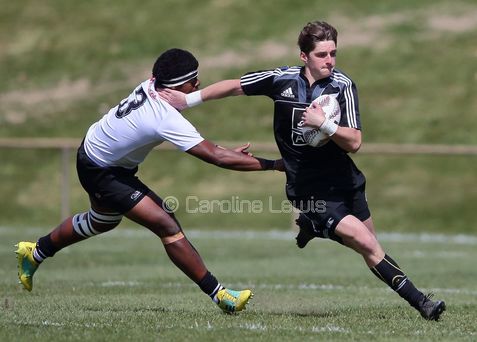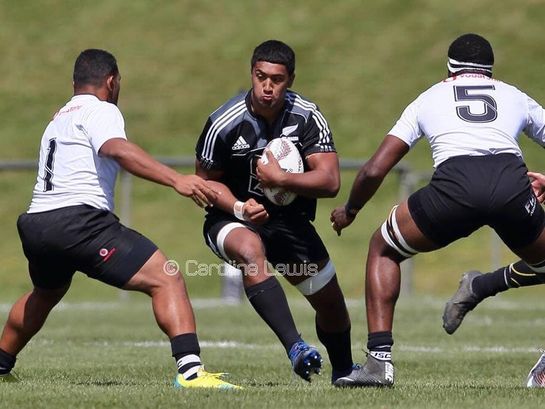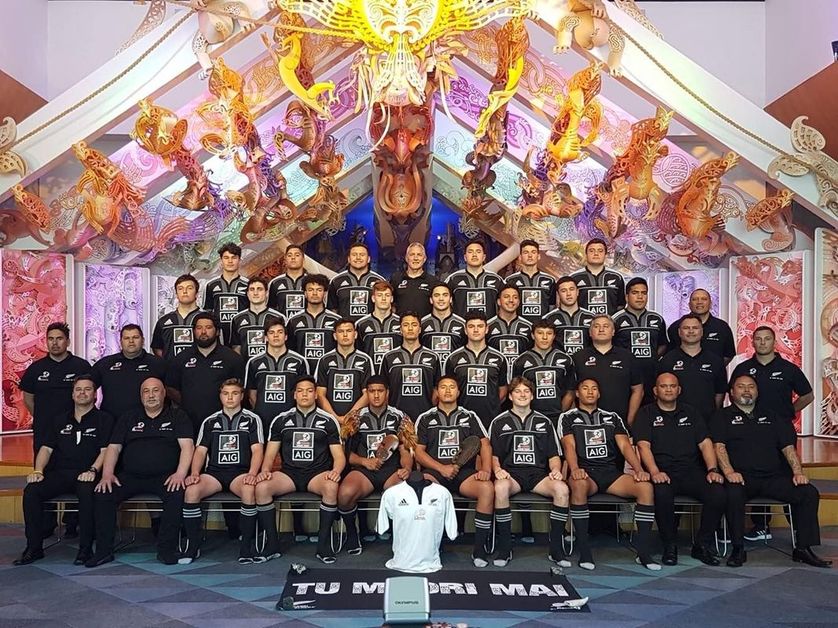|
11/10/2018 The Relevance of Maori Rugby?Carlos Spencer was emphatic when stating the 2005 victory by the New Zealand Maori over the British and Irish Lions was the most satisfying game of rugby he ever played. In a glittering career which included multiple domestic titles and 35 tests for the All Blacks, Spencer's Maori experience was a high point. What’s unique about Maori rugby and is it relevant today? An upset win by a National Maori Under-18 selection against the New Zealand Barbarian Schools at Jerry Collins Stadium, Porirua recently seems to suggest there is plenty of life left in Maori rugby. Jack Gray (Ngāti Whakaue) started at fullback in the Barbarians game and shares some personal and collective sentiments before and during the Barbarians fixture. “Leading into the game you could tell how much the boys had to play for and what it meant for Maori rugby and Maori in general. The coaches have been fighting to have a team for years so for us to win was pretty special. I’ve never been in a team where that’s been the case. It definitely felt like the game meant more to us than the Barbarians,” he said.  Jack Gray. Jack Gray. Gray’s late father Wayne Gray was a Maori All Black, but Jack concedes he had little prior knowledge of his heritage before selection. “Maori hasn’t been a big part of my life so I was surprised to be picked. Getting up to do Hui Te Marama at 530am on frosty grass isn’t something I’ve experienced before. We learned a lot about our ancestors and how tough it was for them. A lot of them were sent to war and didn't come back. We’re lucky, when we go to war on the field we get to go home afterwards.” Rua Wanoa is the current coach of the NZ Maori U18 team and reflects on the genesis of the age group concept. “That 2005 Maori All Black victory over the British and Irish Lions was the high point of Maori rugby. The whole crowd stayed behind to applaud the Maori All Blacks afterwards and that doesn’t happen very often. Unfortunately things fell away after that. In 2010, Maori rugby celebrated the Rau Tau centenary and that was the catalyst to try and revive things again.” The New Zealand Maori Board identified Maori youth as a group to target and a coherent plan to develop Maori talent took shape. Maori reps have two votes on the New Zealand Rugby Board. Presently Provincial Union Maori age grade teams attend regional Maori tournaments. Players selected from these tournaments advance to attend Northern, Central and Southern regional under-18 camps in April. In July 40 players are chosen to attend National camp before finally being selected into the National team in September. The U18 Maori team itself played their first game in 2016 in Rotorua against what was supposed to be a Bay of Plenty representative selection, but instead was a poorly selected and weak Bay of Plenty Maori outfit. The National Maori won a slaughter 103-0. New Zealand Rugby appears to have an ambivalent relationship with the Maori. Funding and fixtures have increased, but this year’s Maori team news was absent in New Zealand Rugby’s official communication around the schoolboy international series. The Maori it appears are in a constant battle to prove their worth. In 2017 a narrow defeat to the Barbarians was followed by a somewhat unconvincing 38-26 win against Tonga. Club Rugby reported: “New Zealand will be relieved to win, but the real story is Tonga who have delighted and surprised their supporters with infectiously positive, organized and aggressive play. Tonga was assisted in the coaching department today by All Black Vaea Fifita while the Maori had at least half a dozen staff many of whom appeared to be doing little.” It was clear standards had to be lifted in 2018. A theme built around the metaphors of Rangatira and Ariki-tanga was established for the camp. Essentially Rangatira is an individual of high rank and as high performance athletics each player looks to emulate the behaviours, traits and standards of a Rangatira. Ariki-tanga is about rising to an even higher level, Wanoa elaborates. “Were all on the same waka which travels better with everyone in unison. If the coaches swear they do sit ups just like the players do. There were no phones in the dining room to encourage being together, little things like that which make us better all round. Were about respect and honour which are universal themes.” Embracing Mauri was another key idea. A mauri is a material symbol of a life principle, a physical object used by an individual or social group expressing their essence. Each player shares what’s most important to them and together these forces are connected like a jigsaw for the good of a common cause. The team’s headquarter at Mana College, Wellington were surrounded by imaginary of legendary Maori chiefs, activists, politicians and rugby players such as Sir Āpirana Ngata reinforcing the desire to rise to Ariki-tanga.  Terrell Peita. Terrell Peita. Loose forward Terrell Peita (Te Rarawa Kaiwhare) from Mount Albert Grammar School was an obvious choice for captain. “I have always been around our culture and it’s customs. I was schooled at Te kura Kaupapa Māori o Puau Te Moana nui-a-kiwa when I was young and then went to Te Kura Kaupapa Māori o Te Tonga o Hokianga a small local school in the heart of Whirinaki. It wasn’t until I moved back to Auckland I started learning more about my mainstream side,” Peita reveals. Maori rugby is actually very mainstream in the New Zealand schools environment with 21 of the 53 players selected in the original New Zealand Schools development camp boasting some Maori heritage. Interestingly though there was only one private schoolboy selected for the Maori squad and Bailey Gordon (Western Heights High School), Nikora Broughton (Hato Paora College) and Samuel Walton-Sexton (Karamu High School) were all selected from institutions hardly recognised today as powerhouses. Capturing some of this untapped talent is invaluable and the Maori deliberately visited the Hurricanes U16 tournament while at camp to support the struggling East Coast against Wairarapa-Bush. At one stage in the second half the Coast were reduced to 13 players by injury, but battled on gamely to complete the match. For their courage, East Coast won the Manaakitanga Trophy - presented in 2010 by Gisborne artist and associate professor Steve Gibbs - for the first time. It is an award that recognises team culture and sportsmanship. The presence of and the haka performed by the National Maori squad might prove inspirational for some of the battling Coast boys. “This team is very unique, a lot different to the Barbarians and New Zealand squads,” Peita explains. “We do a lot of physical conditioning but from a Māori perspective. That included games such as Ki o rahi and Mau rākau. We stay on a Marae and also pray and sing a lot of songs together.” The task of putting together a rugby team is challenging at the best of times, but how does one ensure the cultural building side of things is not just mere lip service? What is done about the boy who rolls his eyes? Assistant coach Kahu Carey (Rangitane, Ngāti Apa ki te Rā Tō): “First and foremost were here to develop a good rugby team, but we’ve got 25 future fathers at camp so if we can imbue them with a little bit about what it means to be a good Maori and a good citizen then win or lose I think we’ve done our job.” Peita with the final word: “The bond created on this camp is something as Maori that just happens because of what we do and how we all cooperate as Rangatira. We were and are still a very tight group. We keep in touch via social media so I guess that speaks a lot for itself.” |
Archives
October 2023
Categories |
OrganisationCollege Sport Media is dedicated to telling the story of successful young sportspeople in New Zealand
|



 RSS Feed
RSS Feed